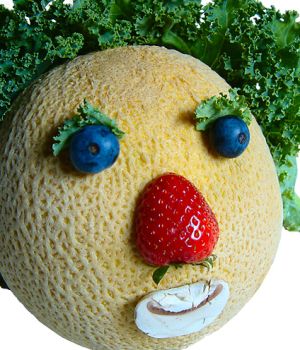When I think Thunder Bay, Ontario in January, I think melons.
Ripe, juicy melons, like cantaloupe.
 The Thunder Bay District Health Unit is investigating an increased number of Salmonella cases in Thunder Bay and District. Twenty-three cases of Salmonella have been reported since January of this year. We would normally expect approximately seven (7) cases in this time period.
The Thunder Bay District Health Unit is investigating an increased number of Salmonella cases in Thunder Bay and District. Twenty-three cases of Salmonella have been reported since January of this year. We would normally expect approximately seven (7) cases in this time period.
Some cases have been linked to person-to-person transmission or travel and some are related to a North American outbreak being investigated by the Public Health Agency of Canada (PHAC). Six cases are still under investigation, but like most Salmonella cases, are likely related to unsafe food handling in the home. …
The outbreak under investigation by PHAC may be related to melons. Because melons grow at ground level, their rough and pitted outer skin can trap Salmonella bacteria from the soil. If the outer skin of a melon is contaminated, the fruit inside may be affected when the melon is cut. Follow these tips:
* Buy melons that are not bruised or damaged and store them in the fridge.
* Throw away any melon that is bruised or rotten.
* Wash all melons before cutting. When cleaning a cantaloupe, brush the whole fruit under running water using a clean produce brush, getting into all the pits on the skin.
* Put cut melon on a clean plate; don’t put the pieces back on the cutting board.
* Don’t reuse any food equipment (e.g. knife, cutting board) used to prepare a melon.
* Wash all equipment with hot water and soap or clean them in the dishwasher.
* Store cut melon in a clean container in the fridge.
How is Salmonella in melons a consumer handling issue? Where is the data that says most Salmonella cases are related to unsafe food handling in the home? And why no notice from PHAC about an outbreak investigation?
.jpg) So many little tips that a bunch of $50-150K per year salaries sweated over.
So many little tips that a bunch of $50-150K per year salaries sweated over.
 The Thunder Bay District Health Unit
The Thunder Bay District Health Unit Dr. David Butler-Jones, Canada’s Chief Public Health Officer, today launched an educational program designed to help students learn about food borne illnesses, how they’re caused and how to prevent the risk of infection.
Dr. David Butler-Jones, Canada’s Chief Public Health Officer, today launched an educational program designed to help students learn about food borne illnesses, how they’re caused and how to prevent the risk of infection..jpg) In Canada to date, there have been 6 cases spread across Manitoba, Quebec and Nova Scotia with the same genetic fingerprint, and 14 other suspected cases in Ontario. No one has been hospitalized so far. There have been 48 cases reported in the U.S.
In Canada to date, there have been 6 cases spread across Manitoba, Quebec and Nova Scotia with the same genetic fingerprint, and 14 other suspected cases in Ontario. No one has been hospitalized so far. There have been 48 cases reported in the U.S.